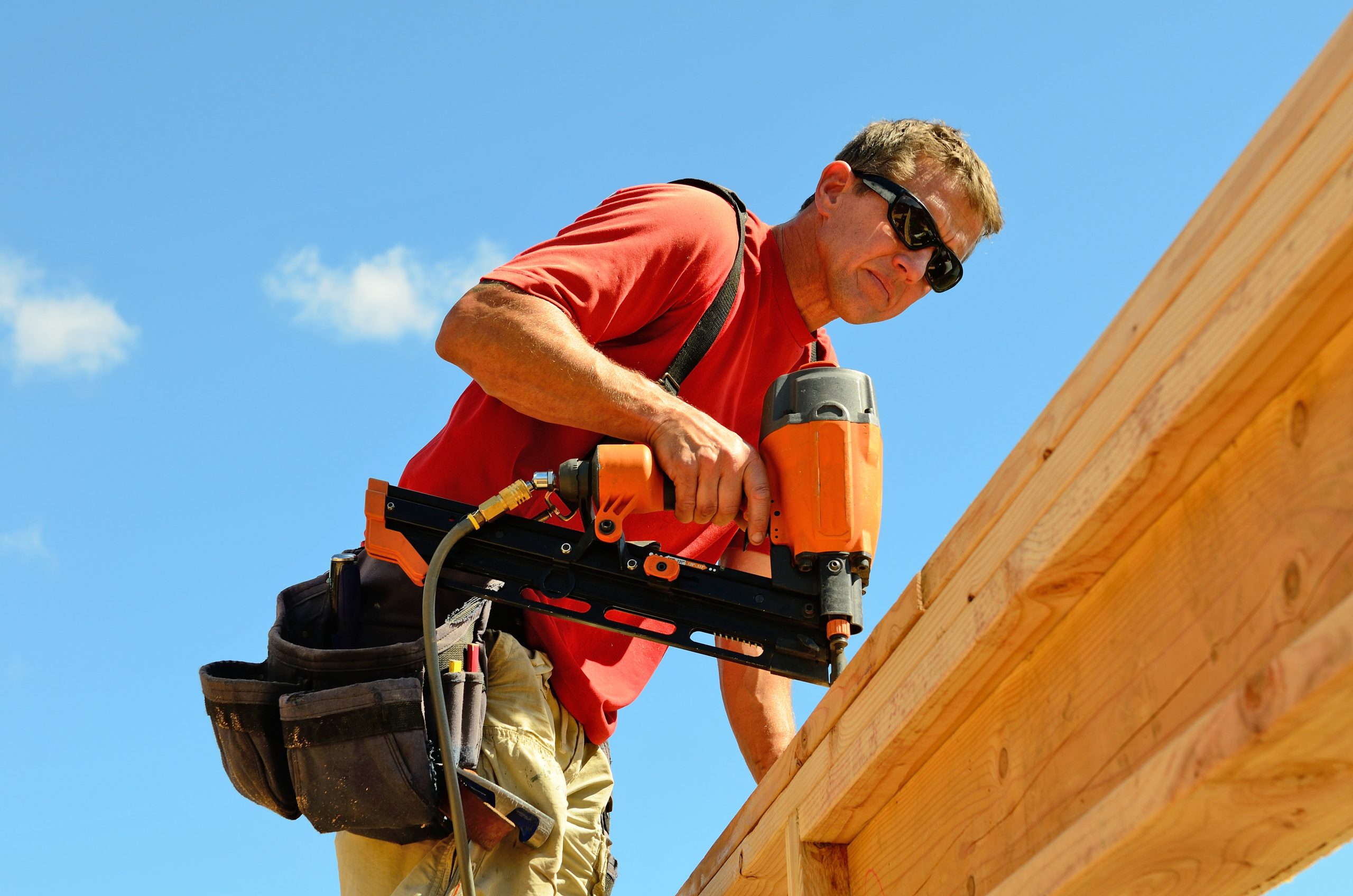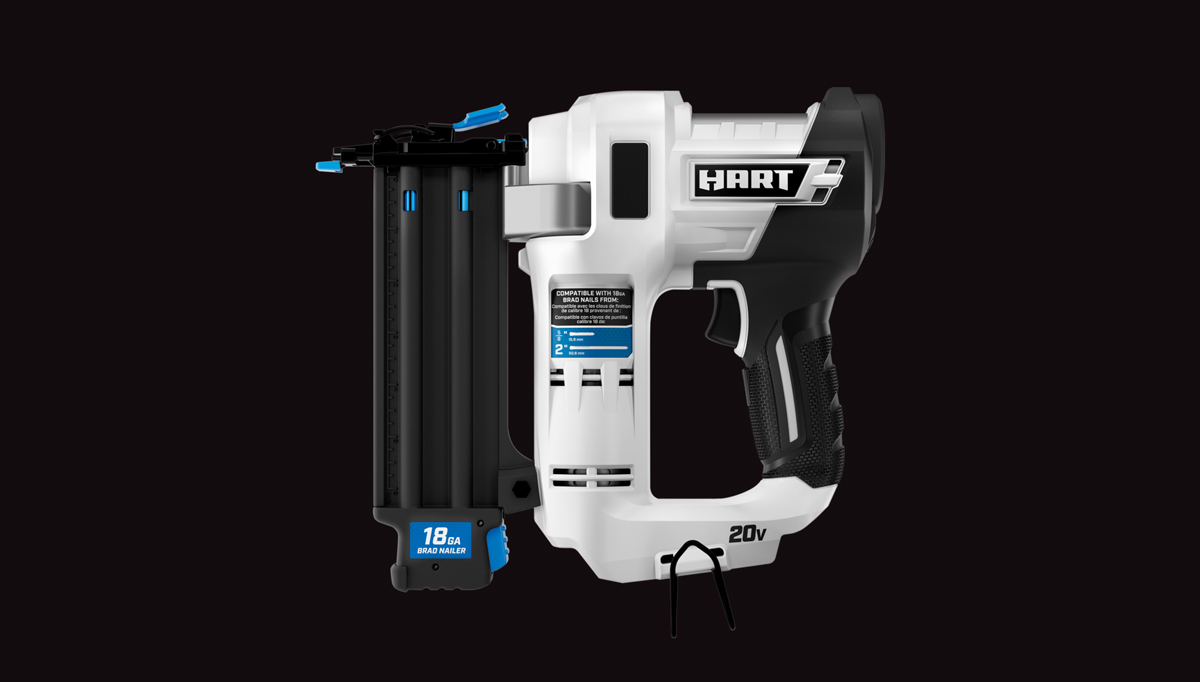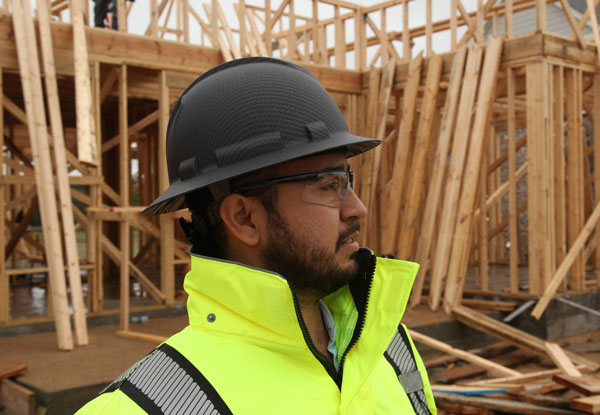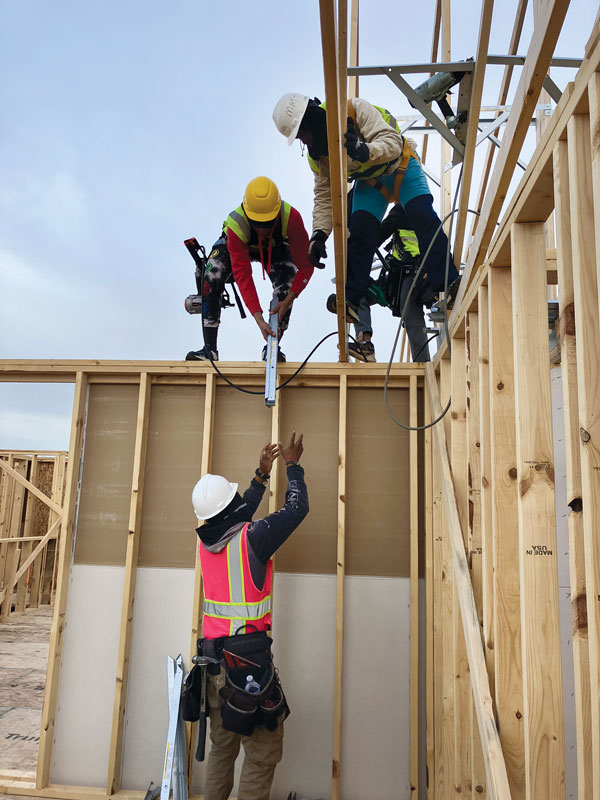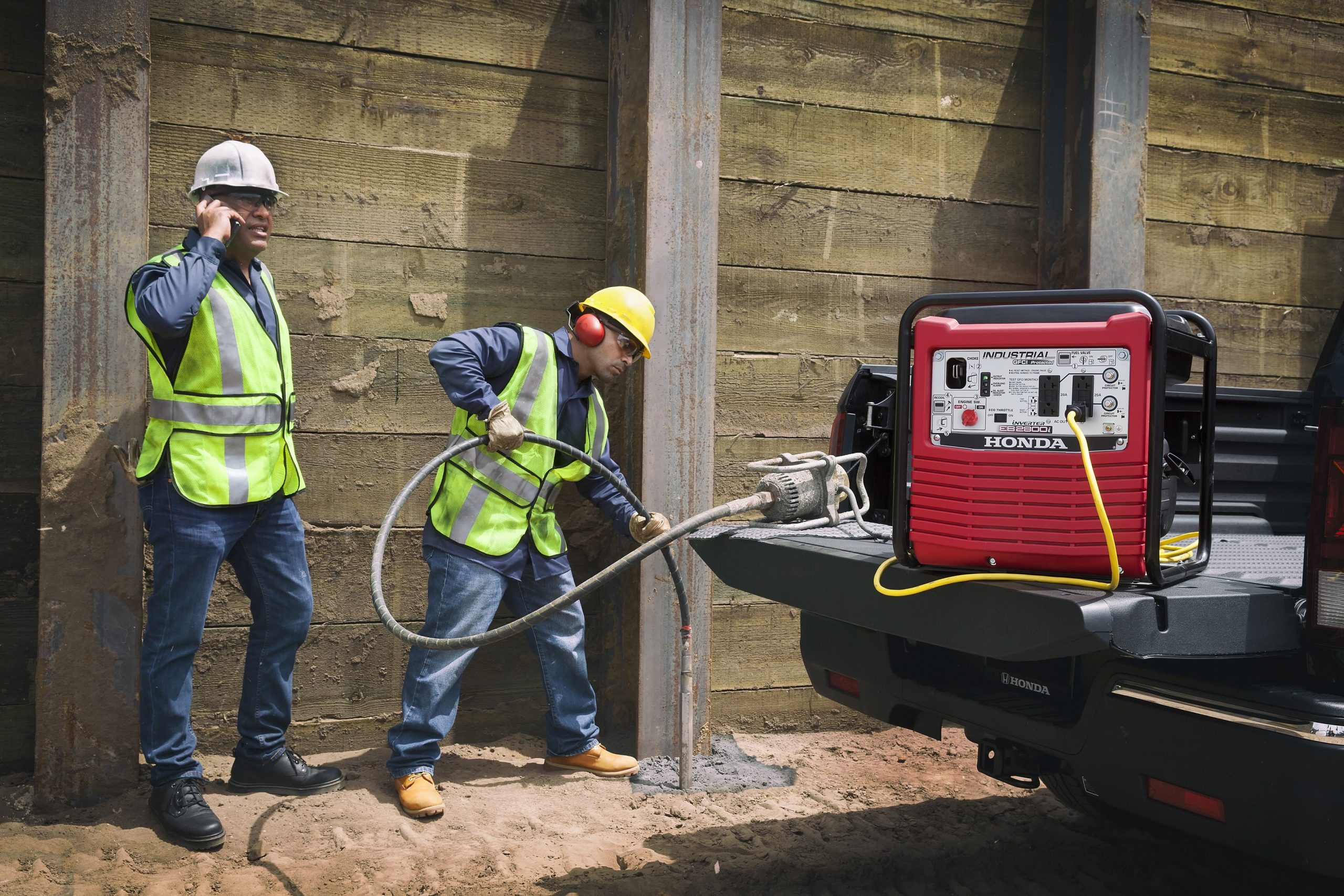This information was originally published in the document Nail Gun Safety: A Guide for Construction Contractors. It contains recommendations that are advisory in nature, informational in content, and are intended to assist employers in providing a safe and healthful workplace.
Nail guns (nailers) are powerful, easy to operate, and boost productivity for nailing tasks. According to the Morbidity and Mortality Weekly Report from the CDC, nailers are also responsible for an estimated 37,000 emergency room visits each year.
Nail gun injuries are common in residential construction. About two-thirds of these injuries occur in framing and sheathing work. Injuries also often occur in roofing and exterior siding and finishing.
Here are six steps to help prevent injuries caused by nail guns.
1. Use the full sequential trigger
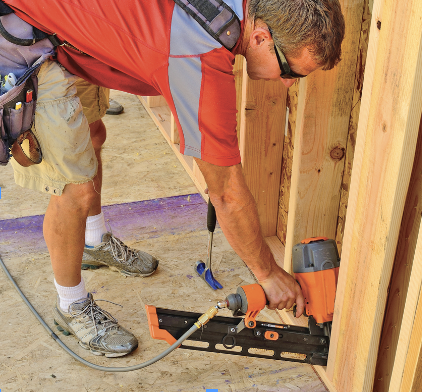
The full sequential trigger is always the safest trigger mechanism for the job. It reduces the risk of unintentional nail discharge and double fires—including injuries from bumping into co-workers.
At a minimum, provide full sequential trigger nailers for placement work where the lumber needs to be held in place by hand. Examples include building walls and nailing blocking, fastening studs to plates and blocks to studs, and installing trusses.
Unintended nail discharge is more likely to lead to a hand or arm injury for placement work compared to flat work, where the lumber does not need to be held in place by hand. Examples of flat work include roofing, sheathing, and subflooring.
Consider restricting inexperienced employees to full sequential trigger nail guns starting out. Some contractors using more than one type of trigger on their jobs color-code the nail guns so that the type of trigger can be readily identified by workers and supervisors.
Some contractors have been reluctant to use full sequential triggers fearing a loss of productivity. How do the different types of triggers compare?
The one available study had 10 experienced framers stick-build two identical small (8 ft. x 10 ft.) wood structures—one using a sequential trigger nail gun and one using a contact trigger nail gun. Small structures were built in this study so that there would be time for each carpenter to complete two sheds.
Average nailing time using the contact trigger was 10% faster, which accounted for less than 1% of the total building time when cutting and layout was included.11 However, in this study the trigger type was less important to overall productivity than who was using the tool; this suggests productivity concerns should focus on the skill of the carpenter rather than on the trigger.
Although the study did not evaluate framing a residence or light commercial building, it shows that productivity is not just about the trigger. The wood structures built for the study did include common types of nailing tasks (flat nailing, through nailing, toe-nailing) and allowed comparisons for both total average nailing time and overall project time. The study did not compare productivity differences for each type of nailing task used to build the sheds.
2. Provide training
Both new and experienced workers can benefit from safety training to learn about the causes of nail gun injuries and specific steps to reduce them. Be sure that training is provided in a manner that employees can understand. Here is a list of topics for training:
• How nail guns work and how triggers differ.
• Main causes of injuries – especially differences among types of triggers.
• Instructions provided in manufacturer tool manuals and where the manual is kept.
• Hands-on training with the actual nailers to be used on the job. This gives each employee an opportunity to handle the nailer and to get feedback on topics such as:
– How to load the nail gun
– How to operate the air compressor
– How to fire the nail gun
– How to hold lumber during placement work
– How to recognize and approach ricochet-prone work surfaces
– How to handle awkward position work (e.g., toe-nailing and work on ladders)
– How best to handle special risks associated with contact and single actuation triggers such as nail gun recoil and double fires. For example, coach new employees on how to minimize double fires by allowing the nail gun to recoil rather than continuing to push against the gun after it fires.
• What to do when a nail gun malfunctions.
• Training should also cover items covered in the following sections of the guidance, such as company nail gun work procedures, personal protective equipment, injury reporting, and first aid and medical treatment.
3. Establish nail gun work procedures
Contractors should develop their own nail gun work rules and procedures to address risk factors and make the work as safe as possible. Examples of topics for contractor work procedures include but are not limited to the following:
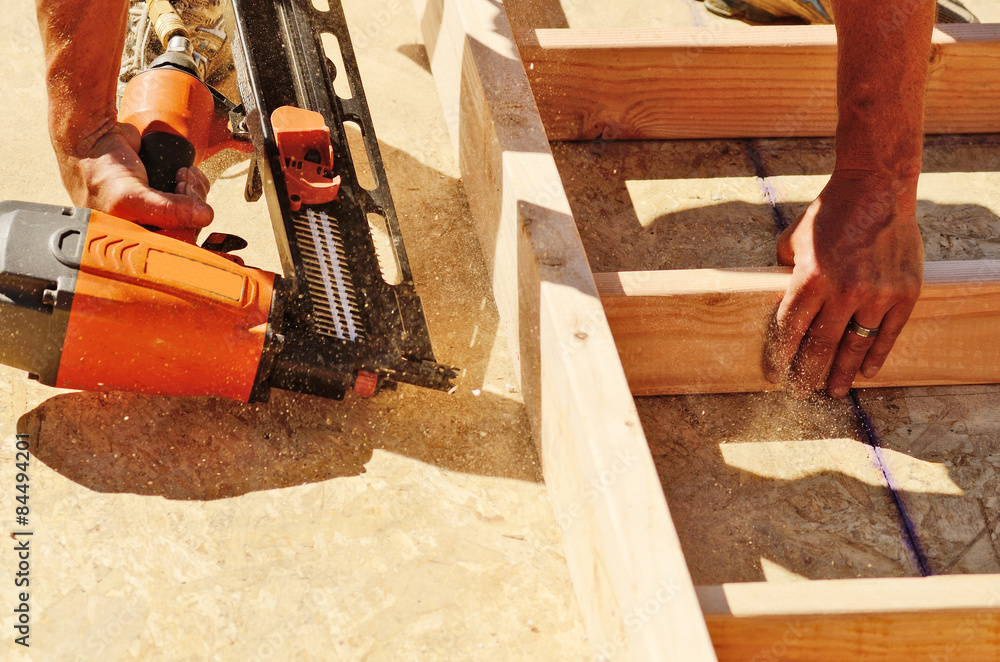
Do’s…
• Make sure that tool manuals for the nailers used on the job are always available on the jobsite.
• Make sure that manufacturers’ tool labels and instructions are understood and followed.
• Check tools and power sources before operating to make sure that they are in proper working order. Take broken or malfunctioning nail guns out of service immediately.
• Set up operations so that workers are not in the line of fire from nail guns being operated by co-workers.
• Check lumber surfaces before nailing. Look for knots, nails, straps, hangers, etc. that could cause recoil or ricochet.
• Use a hammer or positive placement nailer when nailing metal joinery or irregular lumber.
• For placement work, keep hands at least 12 inches away from the nailing point at all times. Consider using clamps to brace instead of your hands.
• Always shoot nail guns away from your body and away from co-workers.
• Always disconnect the compressed air when:
– Leaving a nailer unattended;
– Travelling up and down a ladder or stairs;
– Passing the nail gun to a co-worker;
– Clearing jammed nails;
– Performing any other maintenance on the nail gun.
• Recognize the dangers of awkward position work and provide extra time and precautions:
– Use a hammer if you cannot reach the work while holding the nailer with your dominant hand.
– Use a hammer or reposition for work at face or head height. Recoil is more difficult to control and could be dangerous.
– Use a hammer or full sequential trigger nailer when working in a tight space. Recoil is more difficult to control and double fires could occur with contact triggers.
– Take extra care with toe-nailing. Nail guns can slip before or during firing because the gun cannot be held flush against the work piece. Use a nail gun with teeth on the safety contact to bite into the work piece to keep the gun from slipping during the shot. Use the trigger to fire only after the safety contact piece is positioned.
• Recognize the dangers of nail gun work at height and provide extra time and precautions:
– Set up jobs to minimize the need for nailing at height.
– Consider using scaffolds instead of ladders.
– If work must be done on ladders, use full sequential trigger nailers to prevent nail gun injuries which could occur from bumping a leg while climbing up or down a ladder.
– Position ladders so you don’t have to reach too far. Your belt buckle should stay between the side rails when reaching to the side.
– Maintain three points of contact with the ladder at all times to prevent a fall—this means that clamps may need to be used for placement work. Holding a nailer in one hand and the work piece with the other provides only two points of contact (your feet). Reaching and recoil can make you lose your balance and fall. Falls, especially with contact trigger nailers, can result in nail gun injuries.
Don’ts…
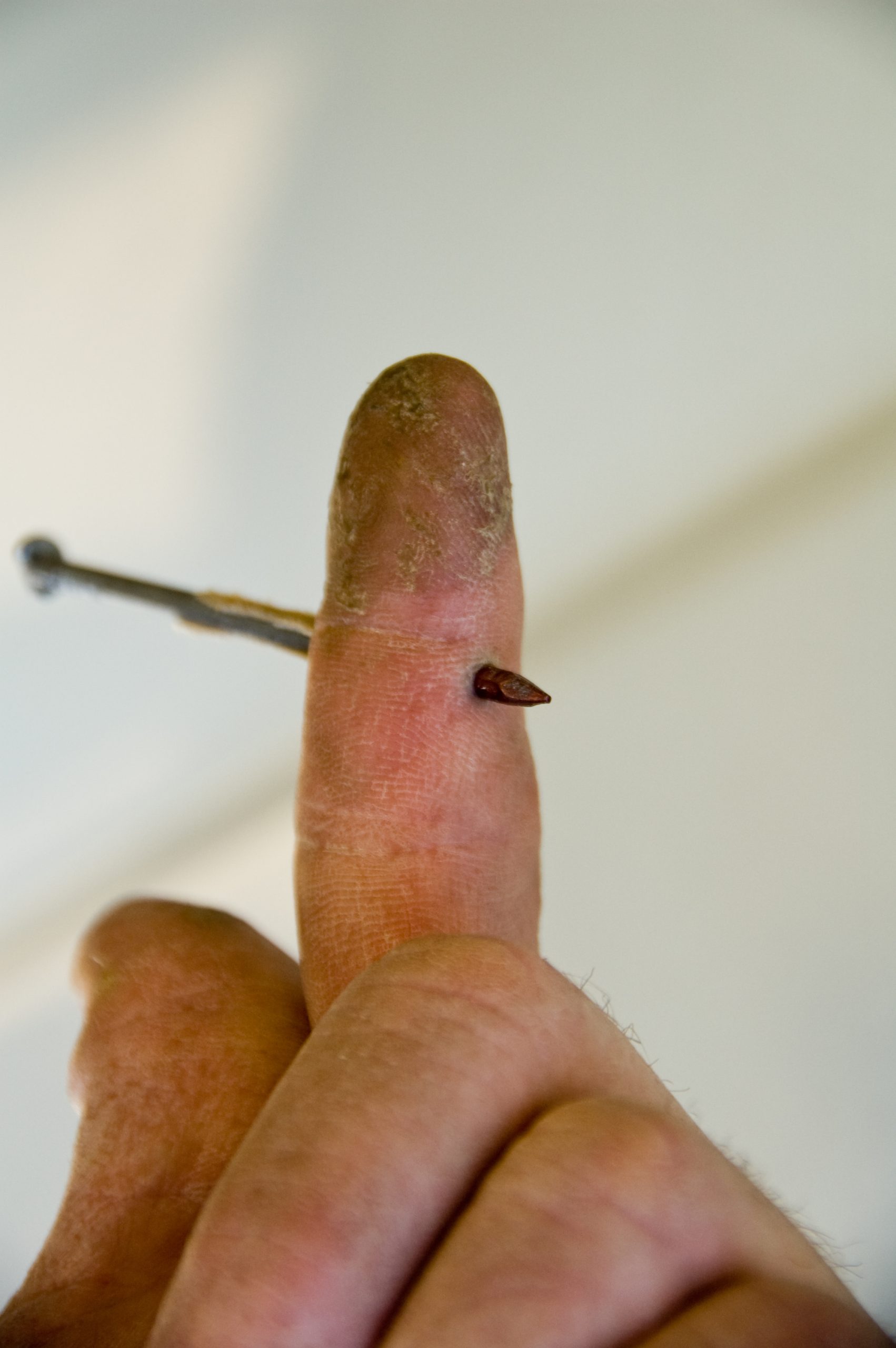
• Never bypass or disable nail gun safety features. This is strictly prohibited. Tampering includes removing the spring from the safety-contact tip and/or tying down, taping or otherwise securing the trigger so it does not need to be pressed. Tampering increases the chance that the nail gun will fire unintentionally both for the current user and anyone else who may use the nail gun. Nail gun manufacturers strongly recommend against tampering and OSHA requires that tools be maintained in a safe condition. There is NO legitimate reason to modify or disable a nail gun safety device.
• Encourage your workers to keep their fingers off the trigger when holding or carrying a nail gun. If this is not natural, workers should use a full sequential nail gun or set down the nailer until they begin to nail again.
• Never lower the nail gun from above or drag the tool by the hose. If the nail-gun hose gets caught on something, don’t pull on the hose. Go find the problem and release the hose.
• Never use the nailer with the non-dominant hand.
4. Provide Personal Protective Equipment (PPE)
Safety shoes, which help protect workers’ toes from nail gun injuries, are typically required by OSHA on residential construction sites. In addition, employers should provide, at no cost to employees, the following protective equipment for workers using nail guns:
• Hard hats
• High Impact eye protection – safety glasses or goggles marked ANSI Z87.1
• Hearing protection – either earplugs or earmuffs.
5. Encourage reporting and discussion of injuries and close calls
Studies show that many nail gun injuries go unreported. Employers should ensure that their policies and practices encourage reporting of nail gun injuries. Reporting helps ensure that employees get medical attention (see #6 below). It also helps contractors to identify unrecognized job site risks that could lead to additional injuries if not addressed. Injuries and close calls provide teachable moments that can help improve crew safety.
If you have a safety incentive program, be sure that it does not discourage workers from reporting injuries. Employers that intentionally underreport work-related injuries will be in violation of OSHA’s injury and illness recordkeeping regulation.
6. Provide first aid and medical treatment
Employers and workers should seek medical attention immediately after nail gun injuries, even for hand injuries that appear to be minimal. Studies suggest that 1 out of 4 nail gun hand injuries can involve some type of structural damage such as bone fracture. Materials such as nail strip glue or plastic or even clothing can get embedded in the injury and lead to infection. Barbs on the nail can cause secondary injury if the nail is removed incorrectly. These complications can be avoided by having workers seek immediate medical care.
This information was sourced from Nail Gun Safety: A Guide for Construction Contractors, a joint publication from the Department of Health and Human Services and the Department of Labor. [DHHS (NIOSH) Publication Number 2011-202, OSHA Publication Number 3459-8-11.] Download the entire Guide at https://bit.ly/3kzQ68b. RB

